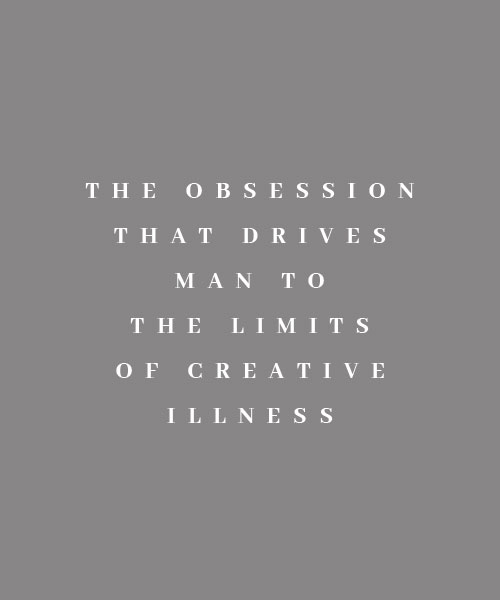
THE SPLENDID OBSESSION
edited by Marco Meneguzzo
There is no doubt that, looking at Gibo’s works, the mimetic capacity of art comes to mind as its intrinsic value, despite the fact that in the last hundred years or so, this ability, this competence is relegated to the margins. The Western contemporary art even calls it a “disvalue”, after it took the lion’s share of what has been called art over the centuries. However, when one approaches absolute and delirious virtuosity one is fascinated by the astonishing operating result, and even more by the mental and practical process behind the entire operation. In truth, the moment of astonishment before the result quickly gives way to the reasoning on the implemented mimetic process, and to its psychological motives, to return then to the subject and to its possible narrations: this is how this text will proceed. Seeing one thing and discovering that it is another always creates a stimulating mental short circuit, because illusion always starts from something that is known and always wins with the memory and nostalgia of its simulacrum, even if it is extraordinarily similar (from the outside): it is the previous knowledge of the object that reassures us and makes us accept the artifice with a smile and not with fear, because the “truth” of the “real” object is able to metabolize the disturbing element of imitation (only in front of an android that it is too similar to humans all the ancestral fears are unleashed, the fear of being replaced; but until nature is completely replaced the primacy of the human is not only undisputed, but even increased …). This is the attitude with which we look at Gibo’s “Vegetable Garden” . But this is only the first look. Soon after we put ourselves in his shoes or, better, we put ourselves in an observer’s shoes, an inept assistant, and we try to grasp the secrets of its manufacture. We go into details – how will he do it? … what an extraordinary ability to bend metal … to make it become something else … -, we give up understanding and we prefer to appreciate the talent; we don’t usually go to the core of the question, which is the obsession that drives man to the limits of creative illness. Owning and treating matter is something for alchemists, and in fact the “transformation” – which is the heart of alchemy – is also the purpose, the aim of Gibo’s action, which in this sense should be seen as a global operation, and not only in its purely technical aspects of iron working. If we do not understand this total thought, we cannot even understand why certain people are able to excel in what they do, such as iron working. It is not the technical ability, it is not the detail, it is not the working invention, but it is all this subordinated to that desire, to that urgency that comes before any technique: it is the desire pushed to the obsession that creates the technical competence, and not viceversa. Of course, Gibo comes from a family of artist-smiths, and this has helped him, but without that instinct and that will he would not have become the best. Thus, we owe him respect for succeeding in his intent, which is to realize his own “masterpiece”: Gibo perfectly knows that what he is doing in his old workshop as an iron artist, and sending in the world, is always a “masterpiece “, in the etymological sense of the term, something that is faultless in its perfection … perfection that he only knows, because in this sense he is “the master ” and we observers are amateurs or, at most, apprentices. On the other hand, even these words, which seem to me to be a very high praise, lead me to look at his work as the result of an almost loving relationship with the material, even of symbiosis. He is so close to it that we are not able to deny it, and therefore we must always keep it in mind in every look that we throw at it. At this point we ask ourselves the reasons for Gibo’s choice of for the mimicry today, which is not a contemporary art practice. Our suggestion is to understand Gibo’s work as a sort of “antiquarian” conceptualism, a desire to return to that state of mind that implies in the viewer – and above all in those who operate – a considerable effort to bring their own way of seeing back to a different season than the present. It is like the Anachronists’ operation a few decades ago, who tried to “return to the museum”, perfectly knowing that this would not have been possible. This is the mental process. But we cannot even refrain from seeing that Gibo has made a vegetable garden, which suggests infinite narratives, such as the rhetoric of the origin, of the good earth, of the time gone, some of which are very suggestive and which open us to frighteningly penetrating reflections on our controversial present. We have the impression that when Gibo shows us the maize plant with roots, or the vine with lightning bolts and hanging iron wires, he is thinking of an autumn or even a winter vegetable garden, on which some unpicked fruit is left. Unlike when he makes vegetable crates, the image is that of the withdrawal, of lethargy, of closing oneself up waiting for new sap. It is the winter landscape, where the part stands for the whole in this synecdoche that shows a plant and makes us imagine the field, the low clouds, the overcast sky, and the pungent cold that dampens the colours: the worst moment of the vegetable garden, conceptually more important, because the resurrection is being prepared. The one that De Chirico did not call “still life” but “silent life”.